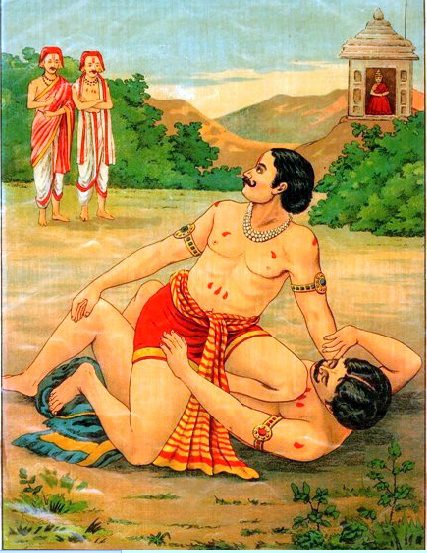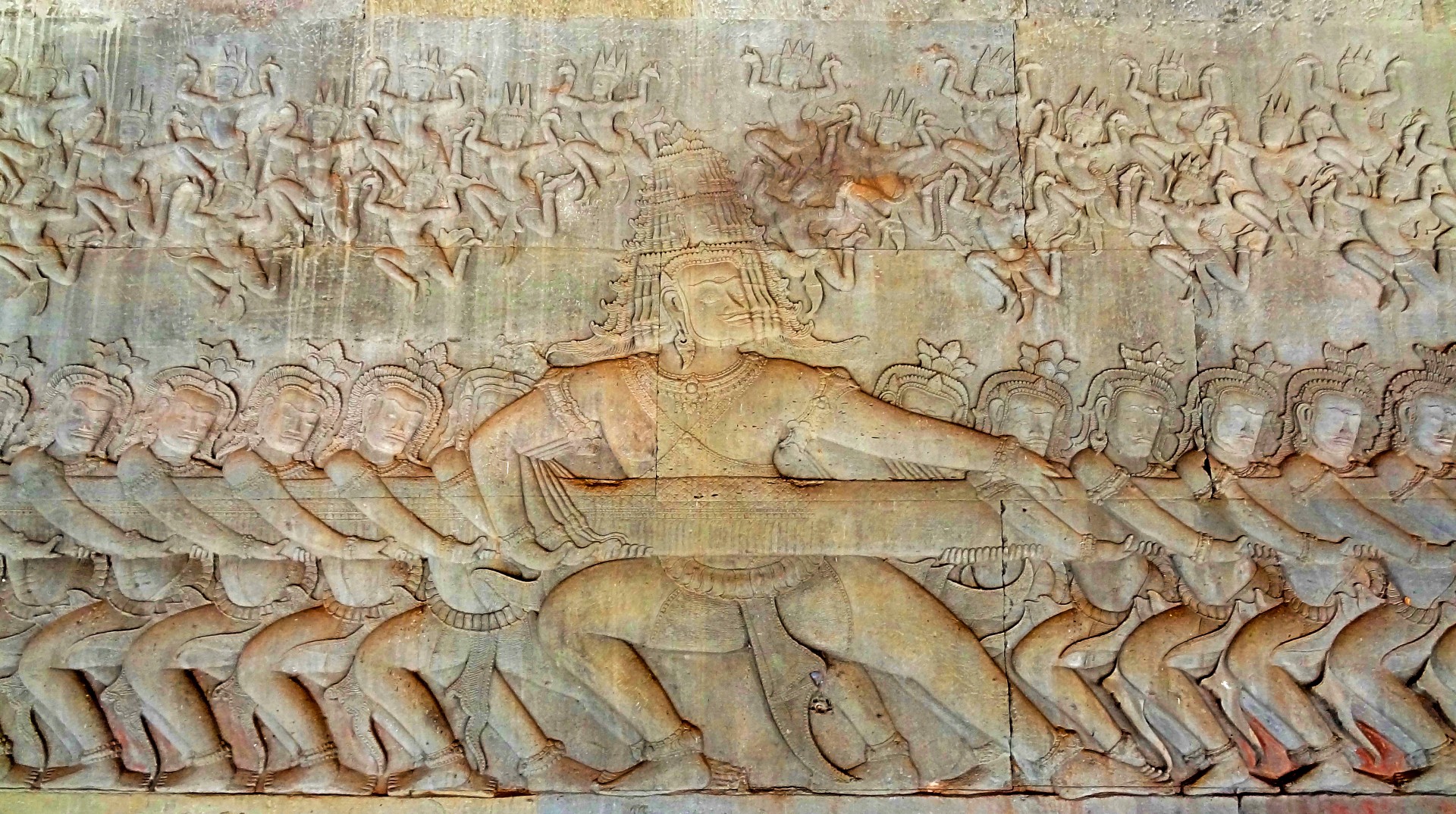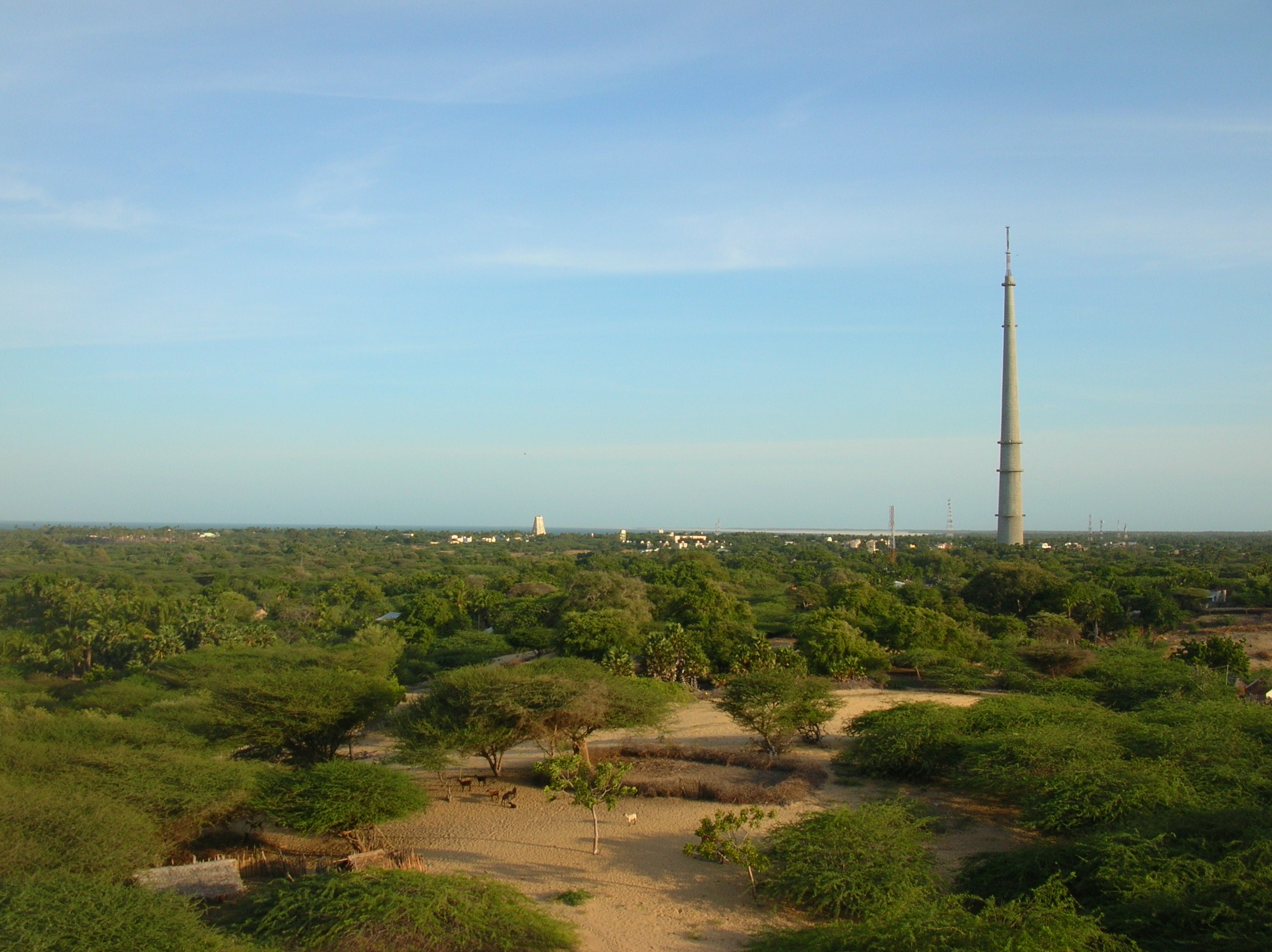|
Kalayavana
Kalayavana () is a king in Hinduism. He is stated to have invaded Mathura with an army of 30 million '' Yavanas'' against Lord Krishna. Legend The '' Brahmanda Purana'' 14.46 narrates the following story of Kalayavana's birth, a woman named Vrukkka-Devi decided to test the virility of Gargya (IAST: Gārgya, "descendent of Garga"). Gargya was unable to ejaculate, for which the Yadavas laughed and insulted him. After a 12-year penance, Gargya got a boon from Mahadeva that he would get a son with the power to destroy the Yadavas. During his penance, he ate iron fillings that made his complexion iron-black (''kāla''). Subsequently, Gargya came to Mathura, and had sex with Indra's Apsara (nymph) in disguise. Kalayavana was the result of this coitus, Gargya crowned him as the new king of Yavanas, and left for the forest. According to the Vishnu Purana and Harivamsa. He was the partial incarnation of Krodha. Jarasandha, Kamsa's father-in-law, and the ruler of Magadha attacked ... [...More Info...] [...Related Items...] OR: [Wikipedia] [Google] [Baidu] |
Muchukunda
Muchukunda () is a king of the Suryavamsha (Solar dynasty) in Hindu mythology. He was the son of King Mandhata, and the brother of Ambarisha. Battle with the asuras According to the Bhagavata Purana, the devas were once defeated by the asuras. They sought the refuge of the king named Muchukunda, described to be a great warrior and a pious man. King Muchukunda granted the devas shelter until they rallied themselves under Kartikeya, the son of Shiva. After their triumph, the devas and their king, Indra, expressed their gratitude to the king for sacrificing his privileged position on earth to travel to Svarga to protect them. They revealed to him that an entire age had passed on earth, with the Treta Yuga now having transitioned to the Dvapara Yuga. They informed him that his family had all died. They offered Muchukunda any boon of his choice for his services, with the exception of moksha (liberation), as it was beyond their capacities. Struck with grief upon learning that his ... [...More Info...] [...Related Items...] OR: [Wikipedia] [Google] [Baidu] |
Jarasandha
Jarasandha () is a king featured in the Hindu Mythology. He is the powerful monarch of Magadha, and a minor antagonist in Mahabharata. He is the son of the king Brihadratha, the founder of the Barhadratha dynasty of Magadha. According to popular lore, the descendants of Brihadratha ruled Magadha for 2600 years followed by Pradyota Dynasty and the Haryanka dynasty. He is mentioned in the Mahabharata and the Vayu Purana. He is also mentioned as the ninth '' pratinarayana'' in the Jain text '' Harivamsa Purana''. Etymology The word ''Jarasandha'' has been explained as a combination of two Sanskrit words: ''jara'' (जरा) and ''sandha'' (सन्ध), "joining". The meaning of ''Jarasandha'' is "the one who is joined by Jara". Legend Birth and early life Jarasandha's father, King Brihadratha, was married to the twin daughters of the king of Kashi. Brihadratha loved both his wives equally but had no sons. The sage Chandakaushika visited his kingdom and gave fruit to t ... [...More Info...] [...Related Items...] OR: [Wikipedia] [Google] [Baidu] |
Garga (sage)
Garga () was an ancient Indian sage who composed a Rigveda hymn. He is also known as Garga Bhāradvāja ("Garga, the descendant of Bharadvaja") to distinguish him from other people of same name. Ancestry Katyayana's '' Sarvanukramani'' attributes the Rig Veda hymn 6.47 to Garga. This text describes Garga as a son of Bharadvaja Barhaspatya. Katyayana was himself a descendant of Bharadvaja, but appears to have abridged the genealogy between Bharadvaja and Garga. The epic-Puranic literature suggests that Garga was a distant descendant of Bharadvaja. According to this tradition, Garga was a son of Bhumanyu and a great-grandson of Vidathin Bharadvaja (who was adopted by Bharata Daushyanti). Garga's brothers included Brhatkshatra, Mahavirya, and Nara. Descendants According to the epic-Puranic literature, Garga had a son named Shini (IAST: Śini), who was also a sage. Shini's descendants were called Shainyas. Several later ancient Indian scholars and legendary figures bore ... [...More Info...] [...Related Items...] OR: [Wikipedia] [Google] [Baidu] |
Yavana
The word Yona in Pali and the Prakrits, and the analogue Yavana in Sanskrit, were used in Ancient India to designate Greek speakers. "Yona" and "Yavana" are transliterations of the Greek word for "Ionians" (), who were probably the first Greeks to be known in India. Both terms appear in ancient Sanskrit literature. ''Yavana'' appears, for instance, in the ''Mahabharata'', while ''Yona'' appears in texts such as the Sri Lankan chronicle '' Mahavamsa''. The Yona are mentioned in the Ashoka inscriptions, along with the Kambojas, as two societies where there are only nobles and slaves. Examples of direct association of these terms with the Greeks include: * The mention of the "Yauna" in the Persepolis Administrative Archives (550–333 BC). * The mention of the "Yona king Aṃtiyoka" in the Edicts of Ashoka (280 BCE) * The mention of the "Yona king Aṃtalikitasa" in the Heliodorus pillar in Vidisha (110 BCE) * King Milinda and his bodyguard of "500 Yonas" in the Milinda Pa ... [...More Info...] [...Related Items...] OR: [Wikipedia] [Google] [Baidu] |
Treta Yuga
''Treta Yuga'' (IAST: ''Tretā-yuga'') (Devanagari: त्रेतायुग), in Hinduism, is the second and second-best of the four '' yugas'' (world ages) in a '' Yuga Cycle'', preceded by '' Krita (Satya) Yuga'' and followed by '' Dvapara Yuga''. ''Treta Yuga'' lasts for 1,296,000 years (3,600 divine years). ''Treta'' means 'a collection of three things' in Sanskrit, and is so called because during the ''Treta Yuga'', there were three Avatars of Vishnu that were seen: the fifth, sixth and seventh incarnations as Vamana, Parashurama and Rama, respectively. The bull of Dharma symbolizes that morality stood on three legs during this period. It had all four legs in the ''Satya Yuga'' and two in the succeeding ''Dvapara Yuga''. Currently, in the immoral age of ''Kali'', it stands on one leg. Etymology '' Yuga'' (), in this context, means "an age of the world", where its archaic spelling is ''yug'', with other forms of ''yugam'', , and ''yuge'', derived from ''yuj'' (), believ ... [...More Info...] [...Related Items...] OR: [Wikipedia] [Google] [Baidu] |
Asura
Asuras () are a class of beings in Indian religions, and later Persian and Turkic mythology. They are described as power-seeking beings related to the more benevolent Devas (also known as Suras) in Hinduism. In its Buddhist context, the word is translated as "titan" or " antigod". According to Hindu texts, the asuras are in constant fear of the devas. Asuras are described in Indian texts as powerful superhuman demigods with good or bad qualities. In early Vedic literature, the good Asuras are called '' Adityas'' and are led by Varuna, while the malevolent ones are called '' Danavas'' and are led by Vritra. In the earliest layer of Vedic texts, Agni, Indra and other gods are also called Asuras, in the sense of their being "lords" of their respective domains, knowledge and abilities. In later Vedic and post-Vedic texts, the benevolent gods are called ''Devas'', while malevolent Asuras compete against these Devas and are considered "enem ... [...More Info...] [...Related Items...] OR: [Wikipedia] [Google] [Baidu] |
Uttar Pradesh
Uttar Pradesh ( ; UP) is a States and union territories of India, state in North India, northern India. With over 241 million inhabitants, it is the List of states and union territories of India by population, most populated state in India as well as the List of first-level administrative divisions by population, most populous country subdivision in the world – more populous than List of countries and dependencies by population, all but four other countries outside of India (China, United States, Indonesia, and Pakistan) – and accounting for 16.5 percent of the population of India or around 3 percent of the total world population. The state is bordered by Rajasthan to the west, Haryana, Himachal Pradesh and Delhi to the northwest, Uttarakhand and Nepal to the north, Bihar to the east, Madhya Pradesh, Chhattisgarh and Jharkhand to the south. It is the List of states of India by area, fourth-largest Indian state by area covering , accounting for 7.3 percent of the total ... [...More Info...] [...Related Items...] OR: [Wikipedia] [Google] [Baidu] |
Moksha
''Moksha'' (; , '), also called ''vimoksha'', ''vimukti'', and ''mukti'', is a term in Jainism, Buddhism, Hinduism, and Sikhism for various forms of emancipation, liberation, '' nirvana'', or release. In its soteriological and eschatological senses, it refers to freedom from '' saṃsāra'', the cycle of death and rebirth. In its epistemological and psychological senses, ''moksha'' is freedom from ignorance: self-realization, self-actualization and self-knowledge. In Hindu traditions, ''moksha'' is a central concept and the utmost aim of human life; the other three aims are ''dharma'' (virtuous, proper, moral life), '' artha'' (material prosperity, income security, means of life), and '' kama'' (pleasure, sensuality, emotional fulfillment). Together, these four concepts are called Puruṣārtha in Hinduism. In some schools of Indian religions, ''moksha'' is considered equivalent to and used interchangeably with other terms such as ''vimoksha'', ''vimukti'', '' kaivalya'' ... [...More Info...] [...Related Items...] OR: [Wikipedia] [Google] [Baidu] |
Badrinath
Badrinath is a town and nagar panchayat in Chamoli district in the state of Uttarakhand, India. It is a Hindu holy place, and is one of the four sites in India's Char Dham pilgrimage. It is also part of India's Chota Char Dham pilgrimage circuit and gets its name from the Badrinath Temple. Etymology Badrinath derives from the Sanskrit compound Badarīnātha, consisting of the terms ''badarī'' ( jujube tree) and ''nātha'' (lord), an epithet of Vishnu. It is also known as Badarikashrama. History In earlier days, pilgrims used to walk hundreds of miles to visit the Badrinath temple. The temple has been repeatedly destroyed by earthquakes and avalanches. As late as the First World War, the town consisted only of the 20-odd huts used by the temple's staff, but the site drew thousands each year and up to 50,000 on its duodecennial festivals (every twelve years). In recent years its popularity has increased still more, with an estimated 600,000 pilgrims visiting during t ... [...More Info...] [...Related Items...] OR: [Wikipedia] [Google] [Baidu] |
Mount Gandhamadana
Mt. Gandhamadana is the tallest peak on Pamban Island near Rameswaram, which lies in the Palk Strait between mainland India and Sri Lanka. It is believed by many people that Lord Hanuman resides there. Location Gandhamadana is located 3 kilometres from Rameswaram, almost midway between the western edge of the island and the ghost-town of Dhanushkodi at the corner of the eastern promontory. Legends Mountain Gandhamadana is believed to be the hillock from whose summit, the Rama devotee Hanuman, commenced his flight to Ravana's Lanka. Kalidasa umarasambhava, VIrefers to Gandhamadana, located in the vicinity of the mythical city of Osadhiprastha in the Himalayas, which is home to Santanaka trees. Nath tradition holds that Parashurama, after enacting his vengeance, sought out Dattatreya atop Mount Gandhamadana for spiritual guidance. Their conversations gave rise to Tripura Rahasya The Tripura Rahasya (Devanagari: त्रिपुरा रहस्य, ), also called the ... [...More Info...] [...Related Items...] OR: [Wikipedia] [Google] [Baidu] |
Dvapara Yuga
''Dvapara Yuga'' (International Alphabet of Sanskrit Transliteration, IAST: ''Dvāpara-yuga'') (Devanagari: द्वापर युग), in Hinduism, is the third and third-best of the four ''yugas'' (world ages) in a ''Yuga Cycle'', preceded by ''Treta Yuga'' and followed by ''Kali Yuga''. ''Dvapara Yuga'' lasts for 864,000 years (2,400 divine years). According to the Puranas, this ''yuga'' ended when Krishna returned to his eternal abode of Vaikuntha. There are only two pillars of religion during the ''Dvapara Yuga'': compassion and truthfulness. Vishnu assumes the colour yellow and the Vedas are categorized into four parts: ''Rig Veda'', ''Sama Veda'', ''Yajur Veda'' and ''Atharva Veda''. Etymology ''Yuga'' (), in this context, means "an age of the world", where its archaic spelling is ''yug'', with other forms of ''yugam'', , and ''yuge'', derived from ''yuj'' (), believed to be derived from (Proto-Indo-European language, Proto-Indo-European: 'to join or unite'). ''Dvap ... [...More Info...] [...Related Items...] OR: [Wikipedia] [Google] [Baidu] |
Indra
Indra (; ) is the Hindu god of weather, considered the king of the Deva (Hinduism), Devas and Svarga in Hinduism. He is associated with the sky, lightning, weather, thunder, storms, rains, river flows, and war. [3 volumes] Indra is the most frequently mentioned deity in the ''Rigveda''. He is celebrated for his powers based on his status as a god of order, and as the one who killed the great evil, an Asura (Hinduism), asura named Vritra, who obstructed human prosperity and happiness. Indra destroys Vritra and his "deceiving forces", and thereby brings rain and sunshine as the saviour of mankind. Indra's significance diminishes in the post-Vedic Indian literature, but he still plays an important role in various mythological events. He is depicted as a powerful hero. According to the ''Vishnu Purana'', Indra is the title borne by the king of the gods, which changes every Manvantara – a cyclic period of time in Hindu cosmology. Each Manvantara has its own Indra and the In ... [...More Info...] [...Related Items...] OR: [Wikipedia] [Google] [Baidu] |






